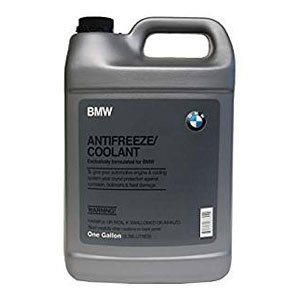10 Highest Rated Coolants for Motorcycles
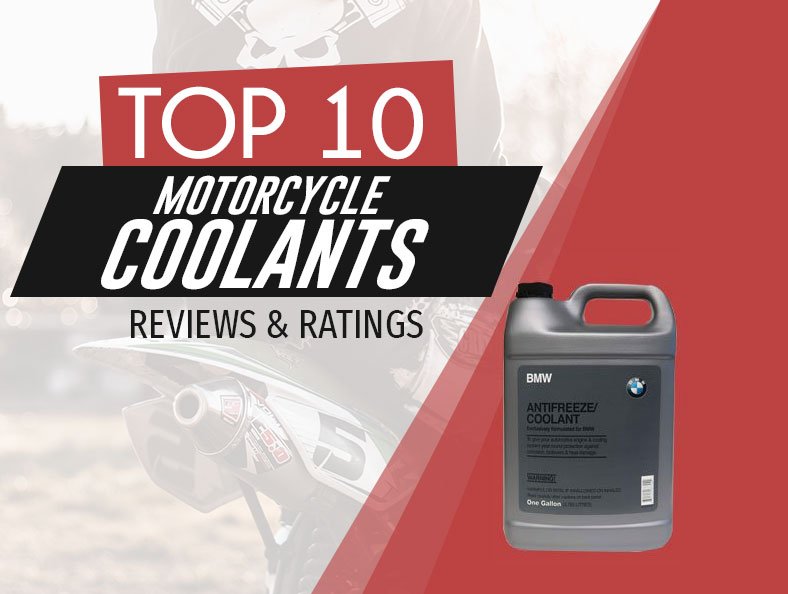
Road Racerz is proudly supported by our readers. Products purchased through links on our site may provide us a commission. Learn More
Having a quality and reliable coolant is essential for your motorcycle’s performance. Without it, your bike wouldn’t be able to perform at a safe temperature.
Engines make a lot of energy, but only a little amount of it is used to move your bike. The rest of that energy turns into heat, which is precisely why you need a coolant.
Now, regardless of whether you ride a Harley or Honda, you need a good motorcycle coolant to maintain your bike cool.
Stay tuned as we review some of the top products and their pros and cons. We’ve also included a detailed buyer’s guide with all the necessary info on how to choose the best one.
Our 10 Top Motorcycle Coolants
| IMAGE | PRODUCT | DETAILS | |
|---|---|---|---|
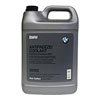 |
| View Latest Price | |
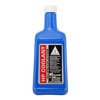 |
| View Latest Price | |
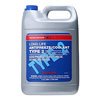 |
| View Latest Price | |
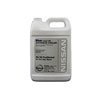 |
| View Latest Price | |
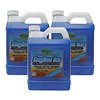 |
| View Latest Price | |
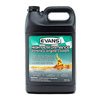 |
| View Latest Price | |
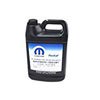 |
| View Latest Price | |
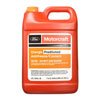 |
| View Latest Price | |
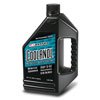 |
| View Latest Price | |
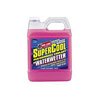 |
| View Latest Price |
BMW – Best Anti-Corrosion
BMW is a well-known name, so, understandably, it makes a reliable coolant. This antifreeze is safe to use on different BMW vehicles because it’s exclusively formulated for the purpose.
It’s a genuine BMW product, meant to provide year-round protection of your automotive engine and cooling system.
This one protects from boilovers, corrosion, and heat damage so that your bike can go for an extended period. It comes in a 1-gallon bottle.
BMW recommends this product for its motorcycles because the radiators are designed to work with this kind of coolant.
PROS
- Genuine BMW product
- Protects against corrosion and heat damage
- Year-round protection
CONS
- One size only
Honda – Best Ready to Use
This genuine OEM Honda coolant comes in 1-quart and 2-quart bottles, depending on your needs. It’s good to be able to choose, especially if you have several bikes.
This is the brand’s new formula with improved specifications and technology. Because it’s a 50/50 blend, the antifreeze is ready to use immediately upon arrival.
While it’s recommended for Honda bikes, you can use it on snowmobiles, ATVs, and UTVs just as well. It’s easy to use and provides an extended period of protection against boilovers and heating.
This exclusive Honda formula has a non-abrasive corrosion inhibitor, providing maximum protection at all times.
It’s a blue formula, compatible with the original green coolant.
Keep in mind that this one protects in temperatures ranging from -34°F to 265°F. Its boiling point is at 32-fluid ounce.
PROS
- Suitable for freezing temperatures
- Protects against overheating
- Pre-made blend
CONS
- A bit pricey
Genuine Honda – Best Advanced Protection
If you ride a Honda, you should also consider this coolant as one of your best options. It’s an advanced formula providing advanced protection all year round.
It’s a 50/50 pre-diluted blend, so you don’t have to add any water before using it. As such, the product is ready to use the moment you receive it.
This long-life coolant contains a bittering agent and comes in a single quantity bottle. It weighs some 9.29 pounds.
It’s meant for all kinds of terrain vehicles, from motorcycles, cruisers and off-road bikes, to snowmobiles and marine vehicles.
Some people consider it a bit expensive, but if you have a Honda, there’s hardly a better option for you than a genuine Honda coolant.
PROS
- Pre-diluted blend
- Ready for use
- For different vehicles
CONS
- Some people received a damaged bottle
Genuine Nissan – Best Safety
If you have a Nissan, you probably received this coolant with the vehicle. It’s what the manufacturer recommends, although you can use it for other motorcycles as well.
This is the original formula that you can add directly to the radiator when it arrives. Check the label for instructions and recommended amounts if you’re unsure.
It features an advanced formula for cast iron and aluminum engine parts. However, it doesn’t have any amines or silicates that could damage the water pump seals.
On top of that, the formula is free of borates that could cause pitting and aluminum corrosion.
For this reason, this is one of the safest coolants to use, especially if you have a Nissan.
It’s a 50/50 pre-diluted formula, so you don’t have to add any water. It comes ready for use.
PROS
- Original formula
- Instructions include on the label
- Protective against corrosion
CONS
- Only one bottle size available (1 gallon)
Engine Ice – Best Non-Toxic
If you’re looking for a reliable coolant that comes in many bottle sizes, you should check this one. It’s a high-performing antifreeze that’s non-toxic and phosphate-free.
In most cases, this one reduces operating temperatures and prevents a boil over up to 256°F. On top of that, it offers freeze-up protection to -26°F. This makes the coolant ideal for motorcycles, street and racing bikes, cars, snow machines, and ATVs.
It’s legal in ASRA and CCS road racing and permitted at many tracks all over the world due to its performance and quality. It’s engineered to keep the temperature at optimum so that you don’t lose power.
Another thing worth noting is that this one is safe for aluminum and most other metals. It uses propylene glycol, which helps eliminate seal and water pump gasket failures.
PROS
- Great for high-stress conditions
- Comes in several bottle sizes
- For many different vehicles
CONS
- Some people didn’t see any significant difference
Evans – Best Waterless
If you’re looking for a waterless formula, you should consider giving this one a chance. It’s specifically designed for modern, classic and vintage gasoline-powered vehicles. It’s meant for light-duty diesel, CNG, and LP vehicles.
Its boiling point is at 375°F, and it won’t vaporize, although it will help eliminate boilover and after-boil. The formula generates low vapor pressures, preventing coolant loss. This also helps reduce stress on your cooling system components.
It’s important to note that this one contains no water, so there’s minimal chance of corrosion, liner, and water pump cavitation. It minimizes electrolysis issues and maintenance costs just as well.
This one also helps eliminate pre-ignition and engine knock often caused by overheating. It helps improve combustion efficiency while delivering more power as a whole.
However, because it’s waterless, make sure that there’s no water-based coolant remaining in your bike before installation.
PROS
- Minimizes corrosion
- Improves power and efficiency
- Doesn’t vaporize
CONS
- No instructions included
Mopar – Best Pre-Mixed
Mopar is a popular choice to consider if you’re looking for a pre-mixed coolant. It’s been around for quite some time, providing ultimate protection against overheating and boilovers. The coolant provides protection for up to ten years or 150,000 miles.
This 50/50 pre-diluted antifreeze comes in a 1-gallon bottle, which is the only choice when it comes to quantity. You’ll need to buy several bottles if you need more than that.
Another vital thing to mention is that this one contains a bittering agent.
Keep in mind that it can look orange, pink, purple, or red, depending on the color of the container as well as the overall temperature.
PROS
- Pre-diluted
- Effective protection against overheating
- Contains bittering agents
CONS
- It’s a bit pricey
Ford – Best Long Lasting
This orange-colored antifreeze is one of the best long-lasting options out three. It’s an ethylene glycol-based coolant that’s safe for use in diesel and gasoline engines.
It provides year-round protection from overheating, corrosion, and boiling. Keep in mind that this is a 50/50 blend, so it’s pre-diluted and doesn’t require any additional water. For this reason, the antifreeze is ready for use as soon as you receive it.
It’s a mixture of purified water and coolant, which provides freeze protection down to -34°F. When it comes to boiling protection, you’re safe up to 265°F.
Another thing worth mentioning is that it contains a bittering agent.
Still, make sure not to mix any different colors or types of antifreeze in your bike. It comes in a 1-gallon package.
PROS
- For diesel and gasoline engines
- Contains a bittering agent
- Pre-diluted
CONS
- Some people received a damaged product
Maxima – Best for All-Terrain Vehicles
This ready-to-use coolant is a 50/50 blend of premium ethylene glycol-based antifreeze and water. As a result, it provides optimum corrosion and rust protection for all magnesium and aluminum motorcycle engines. It’s also a good option for ATV liquid-cooled engines.
This one contains anti-foam agents that reduce water pump cavitation. They’re also efficient in increasing the overall cooling capacity.
The blend protects against freezing in winter down to -34°F while also preventing overheating since its boiling point is at 265°F.
It’s a low-silicate fluid that’s meant for all kinds of vehicles.
It’s suitable if you have a race bike, sport motorcycle, off-road vehicle, snowmobile, and a marine vehicle.
PROS
- For all-terrain vehicles
- Reduces water pump cavitation
- Protects against corrosion and rust
CONS
- Not the most eco-friendly option
Red Line – Most Convenient
This pre-mixed coolant is safe to use for motorcycles, karts, ATVs, and other similar vehicles. It’s ready to go upon arrival, so you don’t have to add any water.
It’s already blended with deionized and purified water in a proper percentage. As such, it’s designed for cast iron, aluminum, bronze, and brass systems.
This one can decrease the engine temperature up to 30 degrees in total. At the same time, it prevents corrosion and rust in racing engines.
It comes in a ½-gallon bottle, which is the only option when it comes to size.
Though it lacks more quantity choices, the coolant comes with instructions that allow you to change it without anyone’s help.
PROS
- Pre-mixed
- For all modern engines
- Prevents corrosion
CONS
- One-size bottle only
Shopper's Guide
Coolant’s Quality
It’s always recommended that you go for a motorcycle coolant with a long life. A product with a long service life is more cost-effective, but it’s also probably of high quality.
Such a options will improve your bike’s fuel efficiency and prevent crucial mechanical parts from developing certain issues. Of course, this saves you a lot of money in the long run.
For this reason, it might be a good idea to invest in a more expensive and high-quality coolant so that you can save more money on general maintenance in the future.
Antifreeze Property
Keep in mind that not all coolants work as antifreeze as well. Modern formulas usually have antifreeze properties, but there are no rules, so make sure to check product description.
Antifreeze protects your engine at cooler temperatures, allowing it to operate in temperatures as low as -27°F.
If you live in such cold temperatures, you might want to consider a coolant with antifreeze properties. At the same time, if it never freezes in your area, this isn’t as important.
Another thing to note is that some coolants can be mixed with antifreeze products. However, make sure to check this for each specific product.

Mixed or Pre-mixed?
You probably noticed from our reviews that some coolants are pre-mixed while others are concentrated. In any case, pre-mixed products are somewhat more convenient since they’re usually ready to go right out of the box.
Water-based ones are pre-mixed with deionized water, so there’s minimal chance of corrosion. Because this is a pure form of water, it won’t cause scaling in your cooling system either.
On the other hand, there are concentrated motorcycle coolants. These come in different forms and usually require you to add water on your own. Keep in mind that the water should be deionized and without any harmful minerals in it.
In many cases, pre-mixed blends are usually easier to use for simpler motorcycle maintenance.
Chemical Contents
Chemicals are an important factor to consider because it can make or break the deal. Some products contain harmful materials that are toxic and irritating. These are also quite harmful to the environment.
Now, because it’s essential to go for something with fewer toxins, you should always check the ingredients. Manufacturers usually state the ingredients and descriptions on the label.
By avoiding these harmful ingredients, you’re not putting yourself in harm’s way. Now, keep in mind that any product that contains phosphates and silicates can be harmful to your bike and the environment.
Know What Type You Need
It’s crucial that you know exactly what kind of coolant your bike requires. The best way to determine this is by checking your bike’s service manual where the information should be.
Another option is to look for information online if you don’t have the user manual. Going through forums might seem a bit overwhelming, but it’s often one of the best ways of figuring out which type you should use.
Only the right kind can help your bike perform the best it can. It can help improve its life span and protect certain parts from rust, corrosion, and cavitation.
Make sure to get the right bottle size because if you get too little coolant, it probably won’t function properly.
Coolant’s Boiling Point
The boiling point is another important thing you should pay attention to. Generally, it’s best if you find an option with a higher boiling point.
Those with a higher boiling point are more efficient when it comes to actually cooling the engine. And for this reason, consider the ones with a boiling point of at least 250°F. This is especially important if you live in an area where the outdoor temperatures get high.
On top of that, if you ride a high-revving bike, a higher boiling point is critical to prevent overheating, so make sure to give it a good thought.
Anti-Corrosion and Cooling System
In a way, this is a summary of all the other factors we mentioned. Coolants need anti-corrosion additives so that your cooling system can work well. Now, cooling systems are usually made of bronze, aluminum, magnesium, cast iron, and brass.
Different products have different effects on these metals, which is why it’s crucial to pick a coolant that won’t damage the system. Things like borates, silicates, carboxylates, and phosphates can reduce corrosion but can also damage your bike.
Your bike’s hoses, seals, and gaskets can suffer certain levels of damage if exposed to these harmful ingredients. For this reason, you want to check all of these vital factors we discussed before actually purchasing any product.
Understanding Motorcycle Engine Coolants
What is a Motorcycle Coolant?
A motorcycle coolant is actual a liquid that is meant to keep your bike’s engine at what has been determined to be a safe temperature. As we mentioned, lots of energy is released when an engine burns fuel, but only a portion of that energy is used. The rest of it turns into heat, which can then block your engine if there’s no cooling system.
In the cooling system, the coolant circulates from the engine block to your radiator that’s outside your bike. It then absorbs the heat and cools as the motorcycle moves. It goes back to the engine again.
Most options are water-based because water has a high heat capacity. Some might also contain anti-corrosion agents and antifreeze, depending on the particular product you go for. These are great to prevent freezing or damaging the cooling system.
What are the Types?
Water-Based
Water-based coolants are made out of the water, which makes some 50% of the overall ingredients. Nowadays, most are pre-mixed, although you can still find some that require you to dilute them yourself.
These are quite popular, so you won’t have any trouble finding them. They’re generally cheap, but that tends to depend on the brand in question.
Generally, they’re more cost-effective, although not the most efficient because they have a low boiling point. So, you should carefully consider if a water-based option would work well for you, depending on the bike you ride and the temperature you live in.
Another thing to keep in mind is that water-based products tend to cause corrosion to your bike’s components. This isn’t always the case, but it’s something to keep in mind.
Water Free
These don’t contain any water, so they’re more expensive. However, these are almost impossible to cause corrosion because of the lack of water.
In most cases, the constituent chemicals in these are somewhat better at channeling heat away from the motor. Also, these have a higher boiling point than water-based options, so they’re more suitable for racing bikes and hot temperatures.
Water-free ones have a longer life than their water-based counterparts. For this reason, you might want to consider their overall quality, corrosion-resistance, and cooling effects over a somewhat higher price.
Though they’re not as popular (due to price), these coolants are still generally easy to find.
Steps on How to Change Your Coolant
The process of changing your coolant is quite easy as long as you have all the necessary tools. Though it’s an easy process, you should take your safety seriously.
Here’s what you’ll need:
- Enough motorcycle coolant
- A flushing solution
- Screwdrivers or hex keys that fit your bike
- A drip tray
- Old rags
- A funnel
Before you start, you should make sure that your bike is cold. It’s also important that you place it somewhere you can safely work.
It’s vital that it’s cold because if it has been running, the pressured coolant can erupt and shoot out. It’s a potential risk you should be aware of, so let your bike cool.
- Put your bike on a center stand (see how here) or a paddock stand. Make sure to remove any parts of the fairing in order to gain access to your radiator cap, the tank, and the drain bolt. If the drain bolt is near your side stand, you might want to place the bike on that stand so that the draining process is easier.
If your bike doesn’t have a drain bolt, you’ll have to remove the lowest hose in order to drain the system. Again, make sure that the coolant inside is completely cold before you do this.
- Place a drip tray under the drain bolt before you loosen the radiator cap. This should decrease the pressure in the system and allow the old coolant to drain smoothly. Avoid removing the radiator cap at once, or the liquid will shoot out.
Place the drip tray, remove the drain bolt and sealing washers, and sit back as the coolant drains.
- Now would be the time also to clean the system. This isn’t necessary, but it’s advised since you’re already there. Go on and reattach the drain bolt and fill the radiator and overflow with flushing fluid. You can also use a homemade mixture of vinegar and distilled water. Refit the radiator and overflow caps.

Wait for the fluid to come to every part of the system and start your bike. Let it run for some ten minutes.
- Let your bike cool down again before removing the flushing fluid. You can do this the same way you removed the old coolant. Rinse the system with distilled water until you see the clear liquid coming out of the drain bolt hole.
- You now want to add the new. Refill the drain bolt with a new washer and place a funnel in the radiator top. Carefully fit it with coolant, making sure not to rush his. Go slowly as it spreads into all the parts of the system. You should also fill the expansion tank. Make sure to remove all trapped air by squeezing the hoses, but try to be as gentle as possible with this.
- Your next step should be to let your bike sit for a few moments. This allows the liquid to go through the system, settling in properly. After a few moments, you should check the levels and add more if needed. If it all looks good, you can proceed to secure all the caps and bolts back on.
- Start the bike and let it run for some ten minutes or until the cooling system is up to its operating temperature. Once you do that, you should let your bike cool again. This moves around the trapped air if there’s any, so you’ll maybe have to add more if you notice that the level is too low once the air is expelled. Don’t forget to check the levels n your expansion tank and radiator as well.
- At this point, you should have a brand new coolant installed at a proper operating level. You should proceed to clean any remaining product that you may have spilled somewhere on the bike. It’s quite important that you double-check if you spilled any because it can be corrosive. Use soapy water to wash it away if you notice it anywhere on your motorcycle.
- Clean up all the tools and store them away. If you have any remaining coolant left, you should store that somewhere safe as well (preferable out of children’s reach).
Tips on How to Remove Radiator Fluid
Many ingredients are quite toxic and harmful to humans. For this reason, you should carefully dispose of the liquid.
Before you start, you should ensure that the engine is cold. Unscrew the sealing screw below the coolant tank and let the fluid drain.
Use tubing and a funnel to direct the liquid in a large bucket or a plastic bottle. Once it’s all drained, you can remove the funnel and seal the bottle. Make sure to wash and sterilize the funnel and tubing you used before you store them away.
Label the bottle so that you know what’s in there. Make sure to always label it as dangerous so that other people make no mistake about its contents. Contact your local government office about how you should safely dispose of it.
Frequently Asked Questions
What's the best motorcycle coolant for hot weather?
While you can go with any coolant that has a high boiling point, distilled water, and Water Wetter combo is always a good choice.
The Water Wetter reduces the surface tension, which allows better heat transfer. Another good option might be Engine Ice, depending on the bike you have.
Either way, water-based options are much better for hot weather than their waterless counterparts.
What's the frequency of changing my coolant?
You should change yours at least every two years due to its performance deteriorating over time. The most common causes for this are aluminum corrosion and changes in the fluid-to-coolant ratio.
Most contain specific ingredients to help the solution stay alkaline as much as possible. Nonetheless, it tends to become less effective after some time.
In most cases, it doesn’t matter whether you ride every day or once a week. A coolant loses its performance abilities over time, even if it sits in your bike.
Conclusion
We’re sure that you now understand the importance of having a reliable motorcycle coolant. As we said, it’s an essential part of your bike that keeps it running properly.
For this reason, you should only consider the best options. Still, it’s equally as important to think about your bike’s compatibility and all the other factors we mentioned in the Buyer’s Guide.
Hopefully, after you’ve read the reviews, you managed to pick a single option to use in your motorcycle. Take a moment to compare its specifications with the critical buying factors we discussed so that you can affirm it’s the right choice for your needs.

